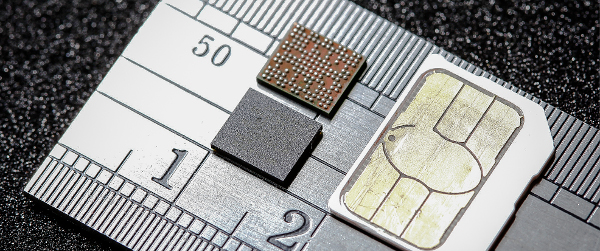
Chipmaker MediaTek launched a programme that targets developers of any background or skill level to create devices and apps for wearable devices and the Internet of Things (IoT).
The Labs programme features the LinkIt operating system, which is based on its own Aster (MT2502) chip, a hardware development kit (HDK), a software development kit (SDK) and other support services.
Here are five things you need to know about it.
The aim
The Taiwanese firm, which is best known for its low-cost mobile processors, is looking to attract developers, from hobbyists and students to professional developers and designers, looking to create IoT and wearable devices.
"So if it’s a fitness band or a watch that you pair with a smartphone or a tablet, or IoT products around the home, such as wireless remote and controls, it’s ideal" MediaTek Labs’ VP Marc Naddell told CBR.
He is also hoping the kit will attract developers looking to develop industry-specific devices and applications for sectors such as manufacturing and asset tracking.
He added: "Developers who are very familiar with Arduino and using HDKs that are Arduino compatible will of course have a head start using it….and it’s an easy one for developers to learn and enter into, so there shouldn’t be any significant barriers for developers who are using Java or C++ or other software languages."
The benefits
The platform features the LinkIt operating system, which is based on MediaTek’s Aster chip that claims to be the smallest system-on-chip (SoC) currently in the market.
Measured at 5.4 x 6.2 mm, the chip provides a 260 MHz ARM CPU, combined with built-in memories, including RAM and 4MB of flash.
The SoC also includes accompanying MT5931 WiFi and MT3332 GPS chips, which are said to offer powerful and battery efficient technology.
The SDK is designed to help makers migrate existing Arduino code to the LinkIt One platform, and provide APIs for building in GSM, GPRS, Bluetooth, and Wi-Fi communication technologies to devices via LinkIt. MediaTek plans to add a LinkIt SDK with Eclipse support by the end of the year.
There’s also a HDK, developed in partnership with Seeed Studio, which claims to make it easier for users to add sensors, peripherals and Arduino Shields for prototype devices.
"If they wanted to attach a video or a camera on to their device or to offer messaging and support browsing, it also has on-board memory and you can connect the board to the Wi-Fi chip," said MediaTek’s Naddell.
He added that developers will be able to build in 3G or 4G in the future via LinkIt.
"Our first focus was to make sure we got the size and the energy characteristics optimised… and now we’re exploring what will come on the roadmap but we haven’t made any decisions yet that I could share," he explained.
The MediaTek Labs website also provides a ‘Solution Catalog’ where developers can offer details on their devices or applications, alongside other support services.
The challenge
One of the main challenges for MediaTek is "reaching out" to the developer community as the overall market becomes "very fragmented".
"Developers are going many places to learn about their options," said Naddell.
He added: "These developers as innovators are doing things that have never been done with whatever tools they have so they’re always uncovering questions like, ‘how do I take your software and do this thing which no one has ever tried to do’. So there’s always going to be a challenge for serving innovators."
The competitors
MediaTek, whose core business is in Asia, joins as the market for IoT becomes increasingly competitive. In the next six years, it could skyrocket to $7.1 trillion and 111.9 million wearable devices, according to IDC, as sensor technologies, wireless technologies and other M2M tools become cheaper and more available.
The Lab programme could put MediaTek in competition with Intel, which released a cheaper starter kit, called Galileo, based on its Quark SoC, and Qualcomm, which launched a development kit that includes support for the AllSeen Alliance’s AllJoyn open-source code.
IBM and Libelium, a wireless sensor network specialist, also rolled out an IoT starter kit that tests and deploys sensor networks in areas such as smart cities, healthcare and retail.
"What distinguishes us is a focus on the critical success factors for the end user and making sure that the design, the size, the energy consumption works," said Naddell.
The business model
The company is offering the LinkIt platform for $79, with hardware and software tools included.
The Mediatek Labs programme is now live, meaning users can sign up from today to download the tools and documentation.






